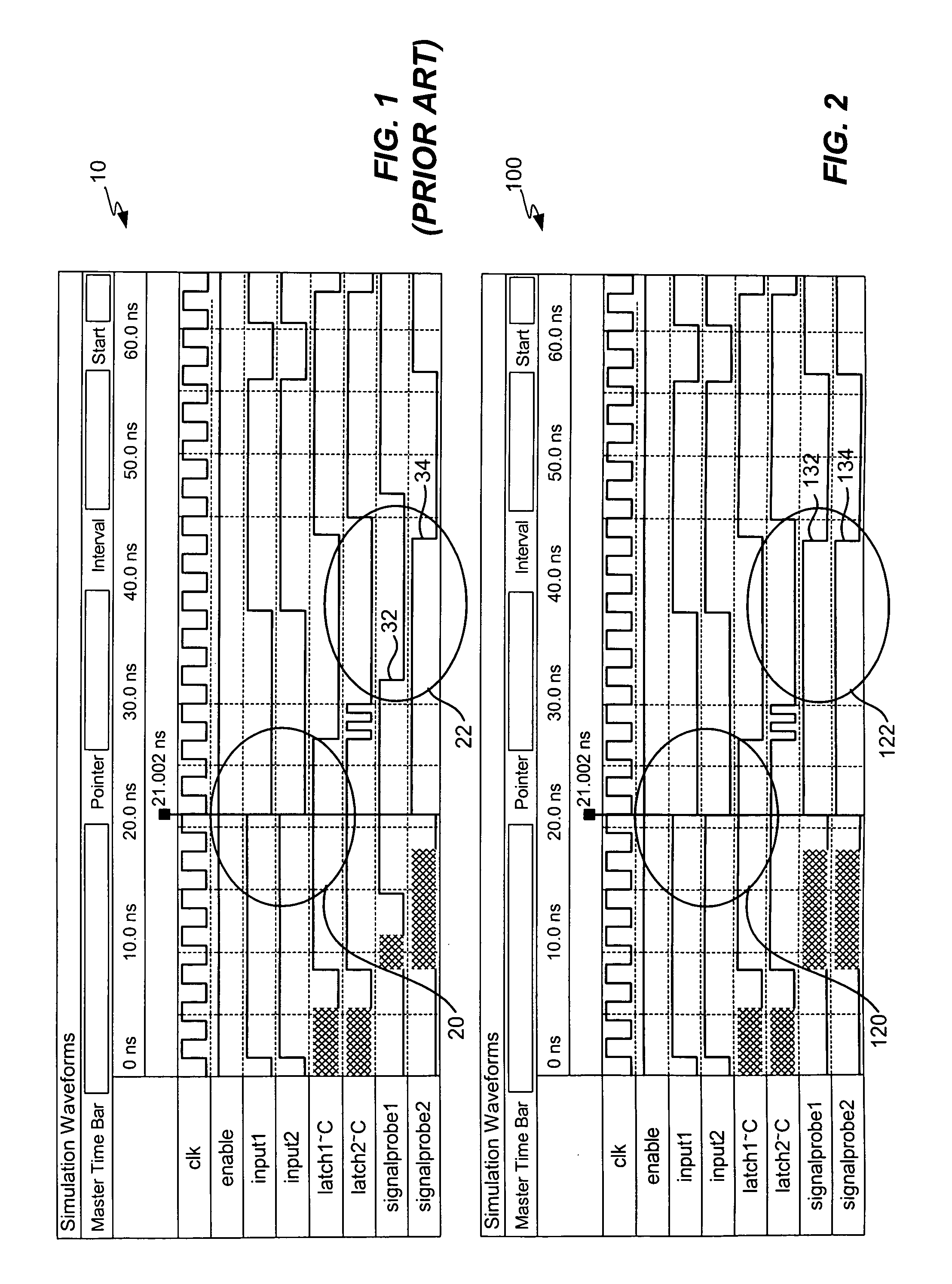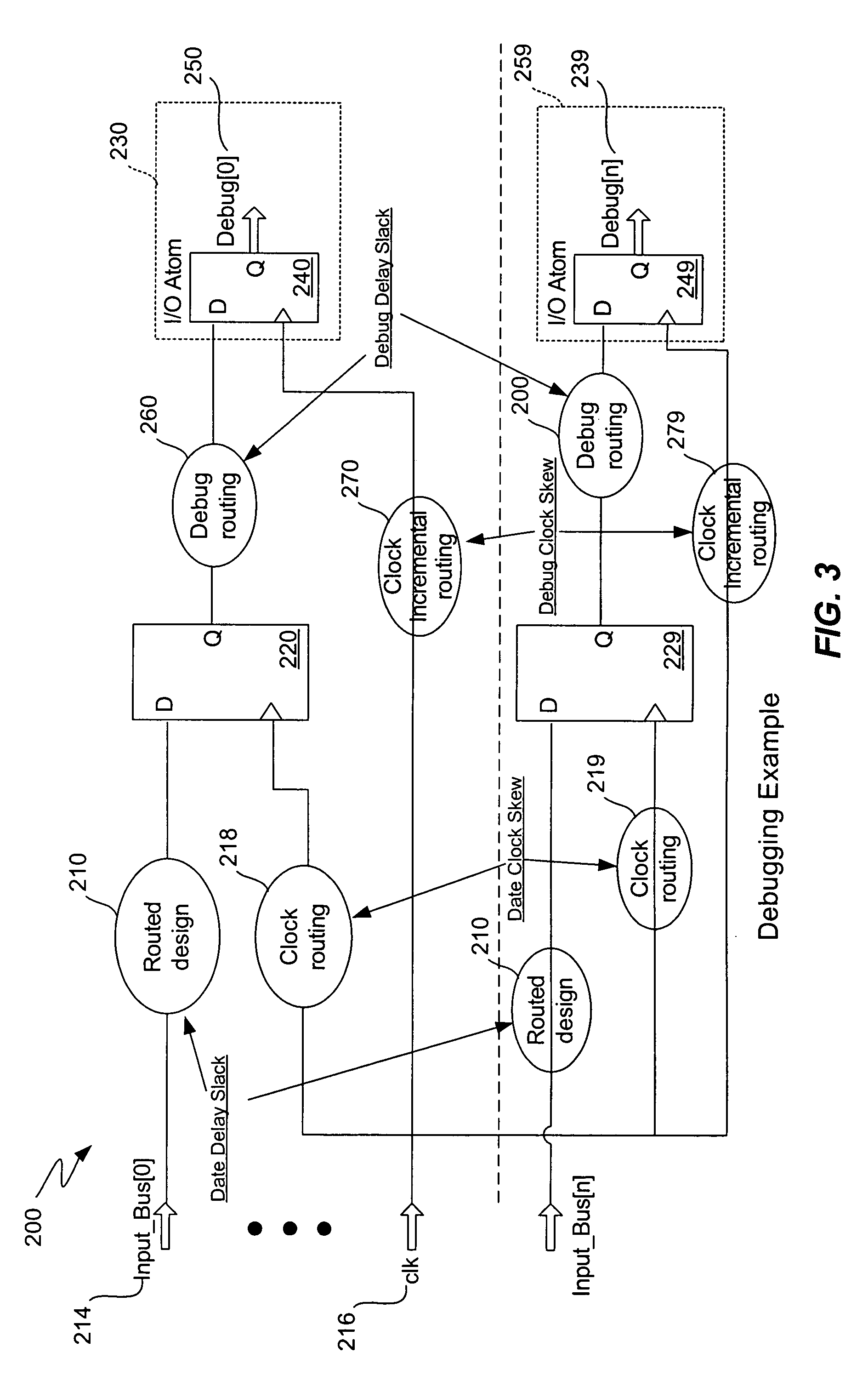Chip debugging using incremental recompilation and register insertion
a technology of incremental recompilation and register insertion, applied in the field of routing signals, can solve the problems of intermittent failure of the pld, simulation may not be able to provide timing characteristics that are similar, and it is almost impossible to generate a simulation that accurately exercises all of the features of the pld on the actual circuit board operating in a complex system, etc., and achieves the effect of effective solution
- Summary
- Abstract
- Description
- Claims
- Application Information
AI Technical Summary
Benefits of technology
Problems solved by technology
Method used
Image
Examples
Embodiment Construction
[0033]In order to develop an electronic design for programming a hardware device such as a programmable logic device (PLD), a programmable logic development system is used. As used herein, “electronic design” refers to designs for circuit boards and systems including multiple electronic devices and multi-chip modules, as well as integrated circuits. For convenience, the following discussion will generally refer to “integrated circuits,” or to “PLDs,” although the invention is not so limited.
Debugging Example
[0034]FIG. 2 illustrates timing waveforms for two signals to be debugged according to the present invention. Similar to FIG. 1, FIG. 2 shows two internal signals of a device, namely, “input1” and “input2” that are to be debugged. In this example, the present invention has been used to insert any number registers into the signal path of these signals between their source and an output pin. At the output pins, these internal signals are labeled “signalprobe1” and “signalprobe2.” In...
PUM
 Login to View More
Login to View More Abstract
Description
Claims
Application Information
 Login to View More
Login to View More - R&D
- Intellectual Property
- Life Sciences
- Materials
- Tech Scout
- Unparalleled Data Quality
- Higher Quality Content
- 60% Fewer Hallucinations
Browse by: Latest US Patents, China's latest patents, Technical Efficacy Thesaurus, Application Domain, Technology Topic, Popular Technical Reports.
© 2025 PatSnap. All rights reserved.Legal|Privacy policy|Modern Slavery Act Transparency Statement|Sitemap|About US| Contact US: help@patsnap.com



